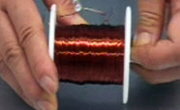극저주파 자기장 노출량을 비교하고 극저주파 자기장 노출로 인한 멜라토닌 및 성장호르몬 분비량의 감소 및 그 영향요인을 규명하고자 송전선로 주변(28명)과 비 주변 거주 초등학생(60명)...
http://chineseinput.net/에서 pinyin(병음)방식으로 중국어를 변환할 수 있습니다.
변환된 중국어를 복사하여 사용하시면 됩니다.
- 中文 을 입력하시려면 zhongwen을 입력하시고 space를누르시면됩니다.
- 北京 을 입력하시려면 beijing을 입력하시고 space를 누르시면 됩니다.
송전선로 주변과 비 주변 거주 초등학생을 대상으로 극저주파 자기장 노출과 뇨중 멜라토닌 및 성장 호르몬과의 상관성 연구
한글로보기부가정보
국문 초록 (Abstract)
극저주파 자기장 노출량을 비교하고 극저주파 자기장 노출로 인한 멜라토닌 및 성장호르몬 분비량의 감소 및 그 영향요인을 규명하고자 송전선로 주변(28명)과 비 주변 거주 초등학생(60명)을 대상으로 2003년 12월부터 2004년 4월까지 연구를 수행하였다. 각 연구대상자에 대하여 극저주파 자기장의 24시간 개인노출량을 평가하였으며, 극저주파 자기장 노출 영향 지표로서 멜라토닌과 성장호르몬 분비량을 조사하기 위해 야간 뇨를 채취하여 멜라토닌은 방사면역검사법으로, 성장호르몬은 효소면역검사법을 이용하여 분석하였다. 또한 연구대상자들의 일일생활패턴 및 활동시간을 조사하기 위해 시간활동표 작성과 설문조사를 병행하였다. 연구대상자들에 대한 극저주파 자기장 노출평가 결과, 송전선로 주변과 비 주변 초등학생들의 자기장 노출수준은 24시간 전체와 학교 및 가정 모두에 있어서 통계적으로 유의한 차이(p〈 0.05)를 나타내었으며, 노출지표인 산술평균, 기하평균, 95 percentile 모두에서 통계적으로 유의한 차이(p〈 0.05)를 나타내었다. 송전선로 주변 초등학생의 멜라토닌 분비량은 2.06 ng/g-cr으로, 비 주변 초등학생의 멜라토닌 분비량 2.11 ng/g-cr 보다 낮았으나 통계적으로 유의한 차이를 나타내지 않았다(p 〉0.05). 그러나 송전선과 거주지까지의 거리가 100 m 이내인 초등학생의 멜라토닌 분비량은 2.00 ng/g-cr로 100 m 이상인 초등학생의 2.13 ng/g-cr에 비해 통계적으로 유의하게 멜라토닌 분비량이 적은 것으로 나타났다(p〈 0.05). 육류 섭취의 경우, 1주일의 육류 섭취 횟수에 따라 멜라토닌 분비량이 통계적으로 유의하게 차이를 나타냈다(p〈 0.05). 멜라토닌 분비량의 영향요인을 규명하기 위해 다중회귀분석을 수행한 결과, 멜라토닌 분비량에 영향을 주는 요인은 거주지와 송전선까지의 거리 및 육류섭취인 것으로 나타났다. 성장호르몬 분비량의 영향요인별 차이를 평가한 결과, 송전선로 주변 초등학생의 성장호르몬 분비량은 0.88 ng/g-cr으로, 비 주변 초등학생의 성장호르몬 분비량 1.14 ng/g-cr 보다 통계적으로 유의하게 낮게 나타났다(p〈 0.05). 본 연구에서는 멜라토닌 분비량이 송전선 주변과 비 주변 초등학생의 극저주파 자기장 노출량과는 유의한 차이를 보이지 않았으나 초등학생의 거주지에서 송전선까지의 거리가 멀수록 멜라토닌 분비량이 증가하는 결과를 나타내었다. 또한 멜라토닌 분비량은 식이습관 중 육류 섭취로 인해 채내 트립토판 증가가 멜라토닌 분비량을 증가시키는 것으로 나타났다. 따라서 멜라토닌 분비량은 극저주파 자기장 노출보다는 송전선로와 거주지까지의 거리와 식이습관 및 사회경제적 수준 등에 의해 더 많은 영향을 받는 것으로 나타났다. 성장호르몬의 경우에는 극저주파 자기장 노출과 성장호르몬 분비량간의 음의 관련성이 나타났으나 분석상의 제한점으로 인해 향후 이에 대한 추가적인 연구가 필요함을 제안할 수 있었다.
다국어 초록 (Multilingual Abstract)
The present study investigated the hypothesis that a extremely low frequency magnetic field partially suppresses the synthesis of melatonin and human growth hormone in a group of 28 primary schoolchildren living nearby and 60 primary schoolchildren ag...
The present study investigated the hypothesis that a extremely low frequency magnetic field partially suppresses the synthesis of melatonin and human growth hormone in a group of 28 primary schoolchildren living nearby and 60 primary schoolchildren aged 12 years living far away from overhead transmission power lines from December 2003 to April 2004 in Seoul, Korea. All subjects were measured for personal 24hr continual exposure, using EMDEXⅡ and EMDEX Lite, recorded total urine volume, the clock time of urination before sleeping necessarily, and the clock time of urine sampling. At the same time, the submitted a logbook for identification of their daily activity pattern, for example, time to go to school/home and the dietary habits that were taken in their 1 week before sampling days. Nocturnal melatonin and growth hormone were analyzed by radioimmunoassay and enzymeimmunoassay, respectively. The mean personal exposure levels of the primary schoolchildren living nearby overhead transmission power line were 0.37 μT, whereas the value for the primary schoolchildren living away from overhead transmission power line 0.05 μT. The primary schoolchildren living nearby overhead transmission power line were exposed more intensely while at school, whereas living away from overhead transmission power line were exposed more intensely while at home. From simple analyses, the mean melatonin levels in the primary schoolchildren living nearby overhead transmission power line were lower than the primary schoolchildren living away from overhead transmission power line, but not statistically significant differences in the levels of the melatonin (p=0.2421), whereas the statistically significant differences in the levels of the melatonin related to the distance from residence to power line less and more than 100 m by cut-off point (p=0.0139). In multiple linear regression analyses, distance from residence to power line (p=0.0146) and dietary habit about burned meat (p=0.0170) proved to be significant risk factors in the mean nocturnal melatonin levels in the primary schoolchildren. This finding that nocturnal melatonin levels in primary schoolchildren living nearby overhead transmission power line were marginally higher than away from the power lines but not related to extremely low frequency magnetic fields exposure suggests that nocturnal melatonin levels in primary schoolchildren living nearby and away from overhead transmission power line may influenced significant circumstantial factor such as distance from residence to power line, dietary habit, and social economics status than magnetic fields exposure directly. In conclusion, these results demonstrate that urinary levels of nocturnal melatonin are not altered in primary schoolchildren exposed to ELF-MF at overhead transmission power line.











